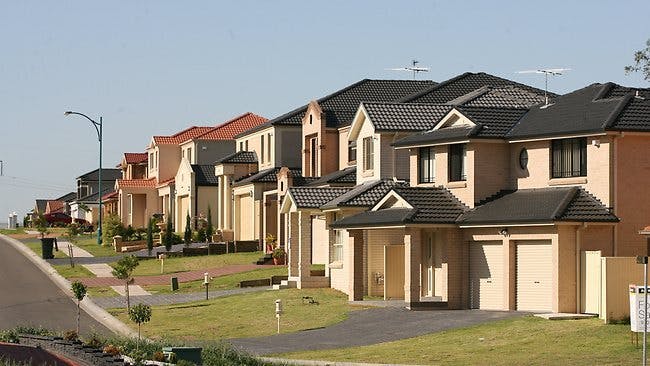Mortgage stress bites in Australia’s suburbs

“A home is the foundation on which you build everything else”, Anthony Albanese proclaimed at the recent Labor National Conference. “There is nothing like a roof over your head to give you the sense that the sky is the limit.”
But for many people, their homes feel more like the walls are closing in as mortgage stress grows to record levels. After twelve interest rate hikes since May 2022, 1.5 million homeowners—29 percent—are at risk of mortgage stress, according to a new report by Roy Morgan.
The average borrower (with a mortgage of around $600,000) is forking out nearly $15,000 more per year in repayments. That’s an extra $1,250 a month. The share of disposable income going to housing costs is averaging over 25 percent, the highest rate in 39 years.
Even if the Reserve Bank does not raise rates again, in the next eighteen months more than a million mortgage holders face the so-called “mortgage cliff”: expiring ultra-low interest loans that will convert to the new, much higher, rate.
Despite the mythology of the Great Australian Dream—that home ownership is the grand social equaliser—the effects of rising repayments are not affecting everyone equally. The RBA’s latest “Financial Stability Report” estimates that nearly half of households in the bottom quarter of mortgage-payer incomes spend more than a third of their income servicing their loan, against only 5 percent for households in the top quarter.
A new report from S&P Global Ratings indicates that mortgage stress is most concentrated in outer suburban and regional areas. Broadmeadows, a working-class suburb in Melbourne’s north, has the highest proportion of households behind on mortgage payments of any postcode, at nearly 7 percent.
First home buyers are particularly feeling the crunch, with less time to have built up a savings buffer. Young families are the group most at risk of mortgage stress, according to Digital Finance Analytics.
For some, it is impossible to keep up. Missed mortgage payments are still relatively infrequent by historical standards, but numbers are growing. The proportion of households more than a month behind on payments has increased by 60 percent in Victoria in the past year, while in Sydney 346 homes have been hit with a court repossession order in the first half of 2023—nearly as many as in all of 2022.
More people are now being forced to sell their homes. In Sydney’s south-west, for instance, one in ten property sales is “distressed”, up from one in 25 last year.
While most people are making their payments on time, doing so comes at a hefty price. Financial comparison site Finder’s latest cost of living report revealed that three-quarters of respondents have reduced their spending: half cut back on groceries and a third spent less on petrol.
Personal savings built up during the pandemic are fast depleting, and the rate of income that households are saving has dropped from 13.5 percent in 2021 to 3.7 percent in mid-2023, the lowest rate in fifteen years.
Almost a million people are now working multiple jobs (a new record) after 89,000 people added a second job in the first three months of this year.
“We don’t have a single penny in savings, just coping with the mortgage”, said Rana, a 38-year-old bus driver and father from Marsden Park in outer Sydney, to real estate site Domain in August. “Normally I’ve never worked on weekends, but now I’m doing it every Sunday. Family time is cut—we can’t think about having a second child now.”
Out of this pain, the banks are making a killing. The Commonwealth Bank, which holds a quarter of Australian mortgages, posted a record $10.2 billion profit this year. CEO Matt Comyn was paid a bumper $10 million salary.
This generosity is not being extended to struggling customers. Banks are squeezing more out of people by quickly passing on interest rate hikes to mortgages and other debts, while rises in rates they pay on savings accounts have been “lower, slower or conditional”, found the Australian Competition and Consumer Commission.
Meanwhile, provisions for those in hardship are minimal. The Australian Banking Association website outlines measures banks are offering, ranging from minor assistance like increasing emergency credit card limits to noncommittal policies like “deferring interest payments on a case-by-case basis”.
It is possible to provide serious relief. During the height of the pandemic, Australian mortgage holders were able to defer repayments for up to six months. Now banks are offering no reprieve, despite their mega-profits, and the Labor government isn’t forcing them to pay up.
“Pride and security and connection is what a home provides every Australian”, concluded Albanese in his musings on housing at the ALP conference. But the reality for many homeowners is added stress, uncertainty and impoverishment.